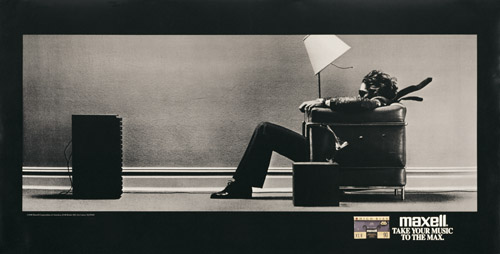Build It and They Will Come
If it is true that history tends to be written by the winners, it is also a fact that the most successful ideas, in hindsight, seem logical.
Pocket-sized devices that store entire record collections, portable PCs that can perform in practically any location, and designer headphones that cost as much as—or more than—small TVs all would no longer be depicted as visionary so much as inevitable creations. Predictably, with these products securely established in the marketplace the question arises: What’s next?
Not so fast. Certainly, forward-thinking minds are undoubtedly designing new devices that we may well consider essential five years from now. On the other hand, that is—and always has been—the essential component of progress we associate with the CE industry. Perhaps the more important proposition, for today, is how much presently-untapped potential still exists. For the foreseeable future, companies can, and should, take full advantage of the incredible window of opportunity surrounding the audio sector. Put simply, anything associated with a tablet or smartphone has the attention of a possibly unprecedented audience.
“You figure out a way to connect yourself to these products,” says Al Baron, who has been a Product Line Manager for the majority of his 25 year tenure at Polk Audio. Having been intimately involved with the audio space for so long, one might assume Baron retains a fondness for a simpler time when audio ruled. This is not the case (which speaks volumes about why Polk remains very relevant in a category that has undergone so many changes). “There is a larger demographic than ever prepared to spend money on audio-related products.”
Obviously a company like Polk is well-positioned, having built up credibility over a long period of time. Nevertheless, the rules of engagement have changed, a development that is not lost on Baron. “Whatever you design and develop today has to be aesthetically compelling and attractive—as well as functional.” Understanding the cultural elements informing that high-end headphones explosion has proven an invaluable blueprint. As such, Polk has a revamped design center where considerable attention is being given to detail and style. There is undeniably a fashion-related aspect involved with appealing to today’s consumer that was not nearly as pronounced or definable a short time ago. “More people shop with their eyes as much as their ears,” Baron suggests. “To even be considered you must pass a certain muster that is, in many ways, higher than it’s ever been.”
Baron’s impressions are consistent with those of another industry veteran, Petro Shimonishi, who manages Denon’s headphones line, and has immersed herself in the audio sector from both a product and marketing persepective. “It’s all about integration,” she claims. “Headphones, for instance, need to cater to the types of solutions consumers are seeking.” An example she gives is the Denon Sport App, which enables the user to track their workouts, computing metrics—in short, doing things that used to be possible only on computers.
“Consumers expect devices to be smarter and smarter these days,” she says. Echoing Al Baron’s observation, she suggests that naturally products need to look appealing, but the more accessible and functional they are, the better. The key term is lifestyle: products that can seamlessly incorporate a consumer lifestyle will be more compelling. In today’s market, that might mean—unlike what we’ve seen with displays or even last generation’s home audio products—smaller is better. “Today’s receivers have better performance, but the form factors are also evolving. Design has a huge impact here.” This insight reaffirms the primary trend in contemporary CE: modern consumers put a priority on products that are both connected and portable.
This trend is unlikely to change anytime soon. CEA recently found that 39 percent of the Internet population listened to online streaming content in the last 12 months and 42 percent listened to MP3 files. Internet radio has become more of a destination than an alternative. Once again, this content—all kinds of it—is prevalent and easier than ever to access. The onus, then, is on manufacturers (including software companies) to continue creating, and refining, products consumers will use to enjoy this entertainment. Just as it has arguably never been a more encouraging time to be a content receiver, it is likewise an advantageous time to be in the position of designing and/or delivering content.
Innovation coupled with the freedom of choice has always been the lifeblood of the CE industry. The chief beneficiary of these advancements has been the consumer. Hardware manufacturers continue to bolster their products and services, progressive business models are thriving in a less constrained environment, and we have every reason to anticipate a dynamic market where performance and agency remain unfettered.

